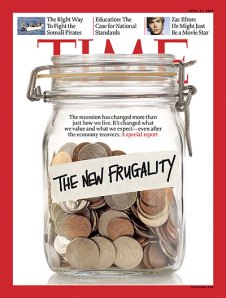Riverside Wedding Photographer - John W Photography - Wedgewood Wedding Specialist
Wide Angle Zoom
Wide Angle Zoom is something I want to get. In the Nikon “pro” world, that means the Nikon 14-24mm on an FX body (full frame, D3, D700). On Nikon DX bodies that isn’t too wide at 21-36. Like the samples on the DPS link Jamie sent, if you want to take a picture of your food in a restaurant, 1 foot from you – you’ll need something like this – and the faster (f2.8) the better for low light situations. Wide Angle Zooms are great for travel and landscapes because you can get up-close and personal and still capture a lot of your field of view. Depending on your budget and which camera you have, both Nikon and Canon crop frame bodies have a few other options to consider.
Here are a few Wide Angle Zoom Lenses to consider:
Tokina 11-16mm f2.8 – $570
Ken Rockwell speaks highly of its performance, and the fastest of this group at f2.8 its really worth consideration.
Sigma 10-20 f3.5 (new and improved) – $650
Sigma 10-20 f4.6 – $480
The Sigma is very popular and has been widely used for years, and now Sigma has upgraded the lens making it a little bit faster (from f4.6 to f3.5). This lens gets good reviews from those who use it (see the flickr group postings for samples.)
Nikon 10-24 f3.5 (new) – $800
Nikon’s new wide angle lens seems good, and as usual is the most expensive of these I’ve listed. Gets good ratings in online tests.
The MicroStock Debate Rages On!
The MicroStock debate rages on. Time Magazine recently purchased this image from iStockphoto for $150 and paid the photographer a $30 commission (corrected 9/12), when they would normally budget $3,000 for the cover. Who loses?
This is the big debate over MicroStock sites where you can sell your images for as little as $1. Is this the future of Stock Photography? Or a thorn in the side of the photography business.
As Time Magazine proves – everything is different in business now. Budgets are being cut, timelines are being squeezed and everyone is shopping for the best quality products for the lowest prices.
Read more on the debate online. Many “professional” photographers are against MicroStock sites because they’re cutting into their business profits. And I agree with the main idea – why would you sell your creative work for $1 (and earn a commission of $0.30)? But how else can a photographer, new to the game or a seasoned pro, sell their images online. Build a shopping photo gallery website, then market, advertise and sell yourself to get customers. Believe me, people sell images online all-the-time, and thousands of people make a living at photography every day (like my friend Anthony), with a book of regular clients and a reputation that keeps their business cranking along. But how does a photographer compete online – against $1 photograph sales on the MicroStock websites.
And who is buying images today? Advertisers, Marketers, Bloggers, Web Developers? Yes, and where are they buying from? Photo buyers are flocking to MicroStock websites like iStockphoto, StockXpert, Fotolia, BigStockPhoto and Dreamstime by the thousands. And photography download subscriptions like Shutterstock and jiUnlimited are fast growing in popularity.
So as a photographer – why not service the growing need for small, affordable images – available for fast and easy download online?
Who knows, but I’ve started to embrace this new trend and so far I’ve been successful at MicroStock online (well … successful as MicroStock goes). Its a quantity sales game and that is the argument against Micro sales. Why devalue your craft? Why sell an image for $1? There are many resources online that say you may wait months, even years before your images start to “cut through” and start making stock photo sales — but its QUALITY, CONCEPT and KEYWORDS that will bring you success in the ultra-over-crowded online world of stock photography. Sub-par images will sit for months of years. Good images will sell.
As a photographer, I’d have been excited if my image was “good enough” to make the cover of Time Magazine. And something I think the BLOG-heads on the web might be missing … TIME is making a point about the New Frugality and the current state of our economy. I might think they might have purchased the image from iStockphoto to help make a point.
DetailsFinancial Direct Mail Marketing is Down
 It’s no secret that all marketing efforts are off a bit. And financial marketing – maybe immune to challenging economic times in the past, is experiencing similar slowing as the rest of us.
It’s no secret that all marketing efforts are off a bit. And financial marketing – maybe immune to challenging economic times in the past, is experiencing similar slowing as the rest of us.
In years past financial marketing remained steady during tough economic times. As consumers need financial assistance, they’ve turned to their banks and credit unions for help. And this year we’ve seen many financial institutions fail because of our current U.S. economic climate. Some will blame the banks for their own undoing, with careless lending practices that led to our current credit crunch and mortgage crisis. Right or wrong, regardless of which side you fall, companies are still marketing, advertising and servicing their customers, but everyone is micro managing their budgets today, and overall spending is down.
DMIOnline, Direct Marketing International Magazine tracks these types of trends and they recently reported on the topic of Financial Marketing:
There were fewer direct mail marketing messages from financial services firms dropping onto American doormats last year, reports business intelligence provider Mintel Comperemedia. The number of mailed offers aiming to acquire new customers fell by more than 25%.
For the first 11 months of 2008, the Chicago-based direct marketing tracking firm estimates financial services direct mail volume at 10.3 billion. In 2007, Mintel Comperemedia estimated that volume at 13.9 billion, a 26% drop. Furthermore, when compared to the same period of 2006, the 2008 11-month total shows a 32% decline.
“Given the struggles faced by card issuers and lenders in 2008, it’s not surprising that they reduced new customer acquisition direct mail so drastically. In the face of increasing losses, they recognised the need to tailor their target audience better,” Clifford added. “But soon I expect we’ll see a levelling off in mail volume as banks find the position from which they can actively engage new customers while remaining profitable and secure.”
Its credit card offers and mortgages that are taking the heat right now, but the fact is that most of new customer aquisitons come from these types of offers. So while these direct mail offers continue to trend down, so goes the trend in the total direct mail business.
Together, credit card and mortgage and loan offers made up 86% of financial services acquisition direct mail tracked by Mintel Comperemedia from January-November 2008.
As the light shines somewhere, at the end of some unknown tunnel, those of us who service the finanical industry will be waiting with great new ideas to help our banks and credit unions, cautiously ease their way back into stride.
For more on this story – visit DMI Online.
DetailsDo what you love, and love it.
If you’re doing something you love, you’re more likely to put your all into it, and that generally equates to making money. – Warren Buffett
 Warren Buffett is an American investor, businessman, and philanthropist. He is one of the world’s most successful people and CEO of Berkshire Hathaway. He was ranked by Forbes as the richest person in the world during the first half of 2008, with an estimated net worth of $62.0 billion, unfortunately plummeting to $37 billion in early 2009, causing him to slide from #1 to #2 in the Forbes Billionaire List behind Bill Gates after losing $9 billion more than Gates.
Warren Buffett is an American investor, businessman, and philanthropist. He is one of the world’s most successful people and CEO of Berkshire Hathaway. He was ranked by Forbes as the richest person in the world during the first half of 2008, with an estimated net worth of $62.0 billion, unfortunately plummeting to $37 billion in early 2009, causing him to slide from #1 to #2 in the Forbes Billionaire List behind Bill Gates after losing $9 billion more than Gates.
Subject of many successful books on business, Warren Buffet is a good subject for inspiration and success.
DetailsTo print, or not to print … or just send an email
This is another BIG topic for the creative services and print industry. Will we continue to print stuff? Or is everything going to be as easy as, just sending an email? I think everyone agrees, print won’t go away for go0d, but the internet has opened up a whole new world of communication and direct marketing opportunities – but are they effective?
If you’re like me, you’re connected online. We research and shop online, we’re on Facebook, LinkedIn, Twitter, Yelp, Digg and all the rest. And along with that online lifestyle comes 300+ emails a day. And do any of those, highly targeted, direct marketing messages get through to me? Some may, but most do not.
Details





















